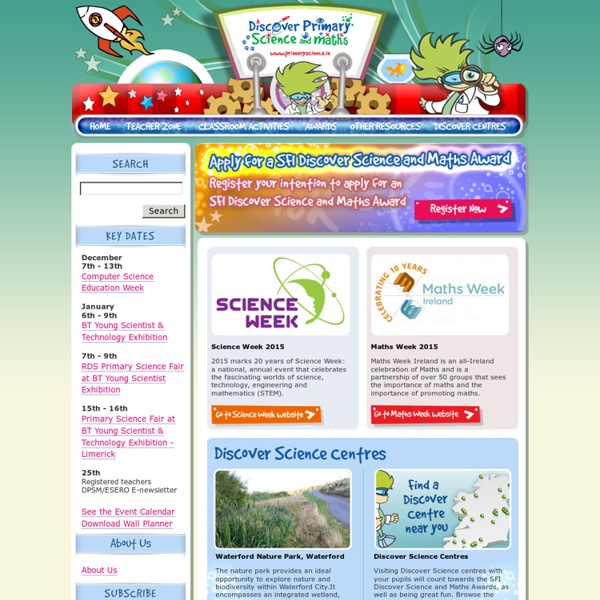



Science Out Loud — MIT+K12 Videos SOL is a YouTube webseries hosted and co-written by MIT students on everything from the physics of skydiving to the biochemistry of farts. With episodes no longer than 5 minutes, these videos take the traditional concepts taught in middle and high school science, engineering, and math (STEM) classes and puts them in a context completely outside the classroom. You won’t find a single equation in these videos - instead, they feature the gamut of hosts and personalities who will take you into labs, rivers, and the sky! Creates (1) 5-min. episodeCook time: ~150 man hours Directions Cast hosts by reviewing <1 min. selfie videos pitches that MIT students submit (~2 weeks).Work one-on-one with cast members to hone their episode ideas after pitch is reviewed and accepted.
Ten Websites for Science Teachers We all know that the web is full of excellent web resources for science teachers and students. However, unless you live on the web, finding the best websites can become quite a challenge. This isn't a "Top Ten" list -- instead, it is a list of websites that I either use on a regular basis or just find interesting. From teaching resources for the nature of science and authentic field journals to wacky videos about numbers, I am sure that you will find something in the following list the works for you! Please share your favorite science web resources in the comment section! 1) Understanding Science UC Berkeley's Understanding Science website is a "must use" for all science teachers. 2) Field Research Journals The Field Book Project from the National Museum of Natural History and the Smithsonian Institution Archives intends to create a "one stop" archive for field research journals and other documentation. 3) Evolution 4) PhET Simulations 5) Earth Exploration 6) EdHead Interactives video
Science Helpdesk Tumble Science Podcast for Kids//Listen More 1) If kids understand how science works, the future will be a better place. 2) Let's make more podcasts for kids. To read our full manifesto CLICK HERE. We hope you enjoy it! As always, we welcome your thoughts and feedback. NASA Mars: The Mission On the evening of January 3, 2004, Spirit is scheduled to land on Mars. Here's a step-by-step guide to what will happen. To watch mission controllers live during entry, descent and landing, please tune into NASA TV at 6:45 p.m. Pacific Standard Time. Initial Preparations Step One: Communications Prep Begins Around 6:45 pm PST, the mission team will be preparing the spacecraft for communications during entry, descent, and landing. Step Two: Spacecraft Rotates A few minutes after 7 pm PST, the spacecraft carrying Spirit will rotate to face its heat shield forward for its final approach. Step Three: Transmission of Tones Begins About a quarter after 8 pm PST, Spirit will begin transmitting tones back to Earth that indicate the spacecraft's status. Step Four: Cruise Stage Separates As the tones begin, the cruise stage separation commences. "Six Minutes of Terror" About 8:29 pm PST, one of the most challenging aspects of the mission begins. Step Five: Spirit enters the martian atmosphere